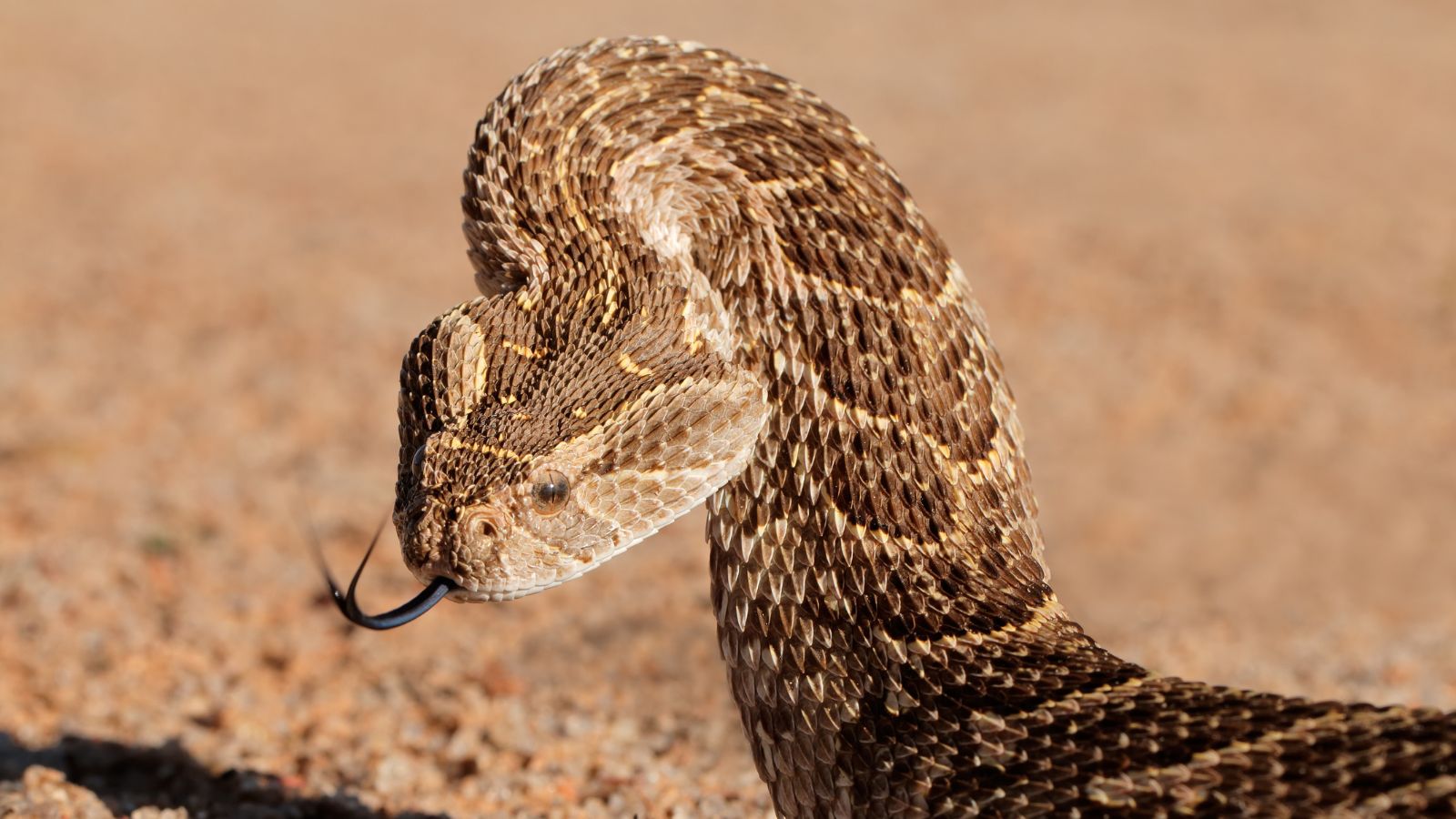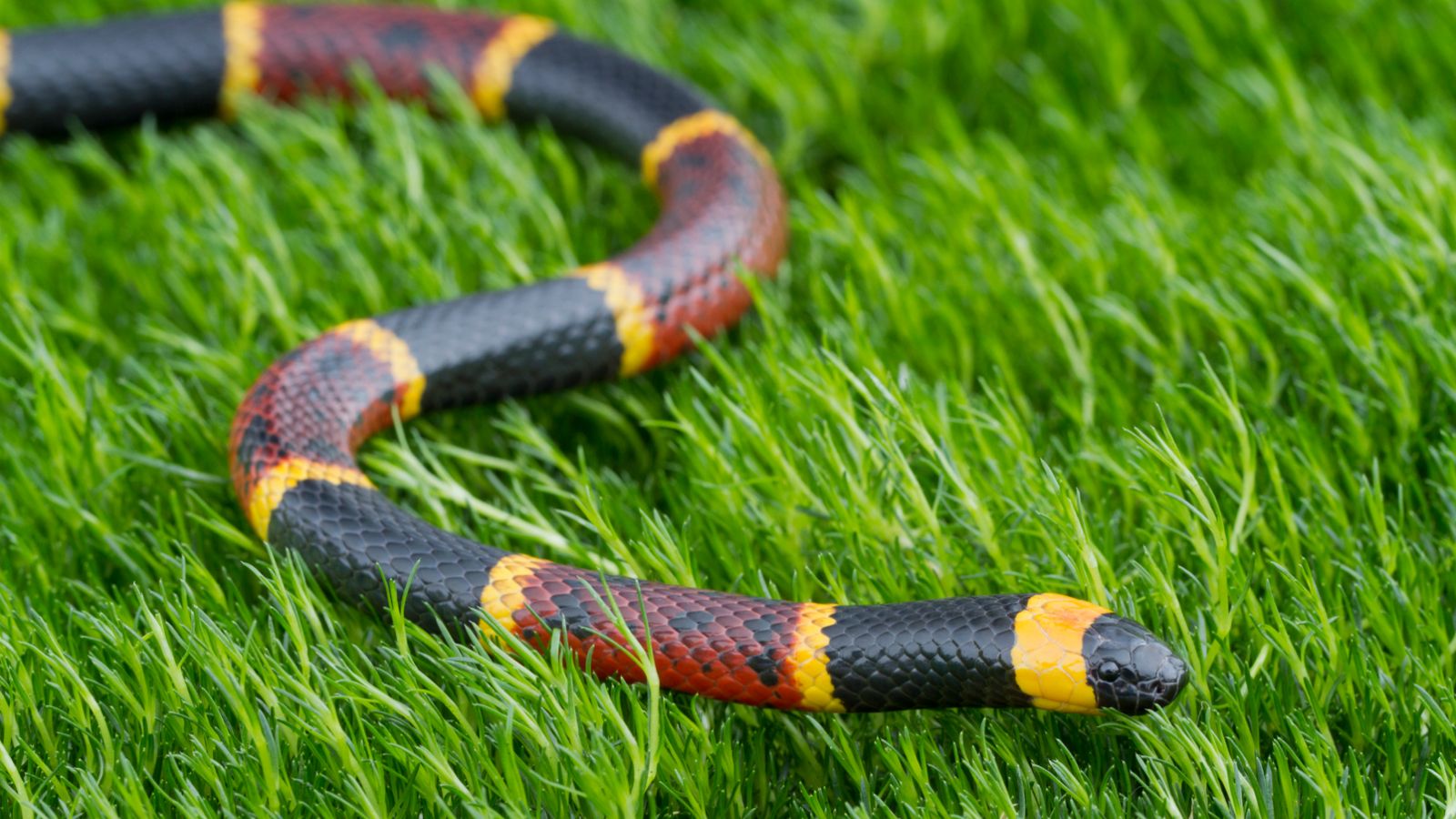We all know there are some dangerous creatures lurking in America’s wilderness. But on some unfortunate occasions, these animals can find their way into our backyards, leaving a trail of terror in their wake. Thankfully, most U.S. snakes are fairly harmless, but there are a few you need to watch out for. Let’s take a look at 18 snakes you don’t want in your garden.
Eastern Diamondback Rattlesnake

According to National Geographic, the eastern diamondback rattlesnake is famous for being the largest species of rattlesnake. They can be found in the southeastern U.S. and can be recognized by the diamond-shaped pattern on their back. These large snakes are known for their potent venom, which can be lethal if not treated quickly.
Inland Taipan

Many people call the inland taipan the world’s most venomous snake. Thankfully, they are native to Australia and rarely encountered by humans, so Americans don’t have to worry about them. Their venom is extremely toxic, but there is an effective antivenom that should be used as quickly as possible.
Black Mamba

Native to parts of sub-Saharan Africa, the black mamba is another one of the world’s deadliest snakes. It is also famous for being the fastest land snake, moving up to 12 mph. Black mambas can also be highly aggressive when cornered, so it’s important to stay as far away from them as possible.
King Cobra

The king cobra is the longest venomous snake in the world, making it a rather intimidating sight. It is native to Southeast Asian forests and has a large amount of deadly venom that is even capable of killing an elephant.
Russell’s Viper

Russell’s vipers can be found throughout the Indian subcontinent and some parts of Southeast Asia. It is infamous for causing more snakebite deaths in its range than any other species. Their bite can cause intense pain, bleeding, and death.
Fer-de-Lance

The fer-de-lance is an extremely venomous type of pit viper that can be found in Central and South America. They are known for being highly aggressive and venomous, causing many snake bite incidents to people nearby.
Eastern Brown Snake

According to Billabong Sanctuary, eastern brown snakes are known as the second most venomous land snake in the world. Like inland taipans, they are native to Australia. Their venom can cause cardiac arrest and paralysis, and they can be very speedy and quick to defend themselves if they feel threatened.
Saw-Scaled Viper

The saw-scaled viper can be found in Africa, the Middle East, India, Sri Lanka, and Pakistan. When they’re warning potential threats away, they will rub sections of their body together to produce a unique sizzling noise. Their venom can be very dangerous, causing severe tissue damage and bleeding disorders.
Tiger Snake

Tiger snakes are native to southern parts of Australia and some nearby coastal islands. Like several other Australian species, they are known for their potent neurotoxic venom, which can cause paralysis and respiratory failure.
Cape Cobra

The Cape cobra is known for being one of the deadliest species of cobra and can be found in southern Africa. Its venom is very toxic and can lead to respiratory failure and even death if left untreated. Unfortunately, this species is also known to enter gardens and homes in search of food.
Gaboon Viper

Gaboon vipers are known for their distinctively long fangs, which are actually the longest of any venomous species in the world. These fangs can deliver huge quantities of venom, making them pretty dangerous. Thankfully, when it comes to humans, they tend to be rather docile in nature.
Puff Adder

The puff adder is common across large regions of African savannas and grasslands. Because it is so widely prevalent, it is responsible for the most snakebite fatalities in Africa. It is also good at camouflaging itself against paths or grassy areas, so it’s important to keep an eye out for this sneaky snake.
Mojave Rattlesnake

Mojave rattlesnakes can be found in the southwestern U.S. and deserts of Central Mexico. It is capable of delivering a deadly neurotoxin that is more potent than most other species of rattlesnake. However, you will usually know if there’s one nearby, as it will warn you off with the sound of its rattle.
Coral Snake

The coral snake can be recognized by its vibrant bright bands of black, yellow, and red. It is native to southern parts of America and Central America. Thankfully, it is reclusive in nature and will rarely bite humans unless threatened or cornered.
Boomslang

Boomslangs can be found in the woodlands and savannas of sub-Saharan Africa. While they are typically docile and reluctant to bite, they can deliver a deadly bite if threatened. Their hemotoxic venom can lead to organ failure and extensive bleeding.
Common Krait

As its name suggests, the common krait is fairly common throughout the Indian subcontinent and Southeast Asia. While it may appear fairly harmless, its venom can actually lead to muscle paralysis and even death in severe cases.
Green Mamba

The green mamba can be found in coastal parts of East Africa. They are pretty shy and elusive, preferring to stick to trees and avoid humans. However, if you do encounter them, their bite can cause respiratory failure and death within just a few hours.
Death Adder

As its name suggests, the death adder is definitely not a snake you’d want to find in your garden. It can deliver a potent neurotoxin that may cause paralysis and death if left untreated. They are found in parts of Australia and New Guinea.
Read More: The Boomers Called It: 19 Stupid Trends That Backfired

Sometimes, we get carried away with trends that we think are cool at the time, only to realize later how utterly ridiculous they were. Join us as we take a cringe-worthy trip down memory lane and explore 19 stupid trends that backfired. Prepare for some facepalms!
The Boomers Called It: 19 Stupid Trends That Backfired
18 Reasons Why No One Is Interested in Working Anymore

The concept of traditional employment has taken a back seat in recent times with changes in economic and social factors, as well as individual preferences. Traditional jobs have also evolved, and many people don’t feel the need to take this route anymore. These are 18 reasons why no one is interested in working anymore.
18 Reasons Why No One Is Interested in Working Anymore
17 States Americans No Longer Want to Live In

America is constantly changing, and within it, so are its states. Some have new laws that residents don’t agree with, while others have increasing rates of unemployment or areas of extreme poverty. These aspects make it difficult for a person to stay in their home state. Here are 17 states that Americans are deciding to reconsider.
17 States Americans No Longer Want to Live In
18 Hard Truths to Accept in Life, According to Boomers

The older we become, the more we learn about life, and with that come the truths that we need to accept. Boomers have had their fair share of truths as they’ve grown through the years. Here are 18 hard truths that every boomer wants us to know.
18 Hard Truths to Accept in Life, According to Boomers
18 Misunderstood Acts The Bible Says Aren’t Actually Sins

People tend to assume that the Bible condemns a wide array of behaviors, but the reality might surprise you. Here, we zoom in on 18 so-called “sins” that may not be as bad as we thought.
